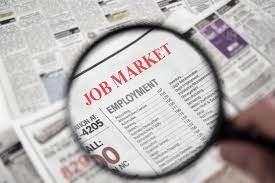Hiring picked up speed in May
 The labor market shows little sign of flagging in the face of rapidly rising interest rates, after the U.S. added more jobs than estimated for a 14th month in May. The Federal Reserve has lifted its key rate 10 times over the same period to fight stubborn inflation. While the central bank had been widely expected to pause increases at its next meeting on June 14, buoyancy in the market could cloud that outlook. The economy produced 339,000 nonfarm payrolls last month. But wage growth slowed to 0.3%, from 0.5% in April, and the unemployment rate rose to 3.7% from a 54-year low of 3.4% — the biggest jump since April 2020.
The labor market shows little sign of flagging in the face of rapidly rising interest rates, after the U.S. added more jobs than estimated for a 14th month in May. The Federal Reserve has lifted its key rate 10 times over the same period to fight stubborn inflation. While the central bank had been widely expected to pause increases at its next meeting on June 14, buoyancy in the market could cloud that outlook. The economy produced 339,000 nonfarm payrolls last month. But wage growth slowed to 0.3%, from 0.5% in April, and the unemployment rate rose to 3.7% from a 54-year low of 3.4% — the biggest jump since April 2020.
Highlights from the May jobs report:
- Unemployment among Black Americans rose to 5.6% from a historic low of 4.7%.
- Labor force participation by Americans aged 25 to 54 hit its highest level since 2007, led by women.
- Jobs growth was broad-based, touching almost every sector except for information technologies.
- The economy has added an average 470,000 jobs each month since 2020, compared with about 187,000 a month in the decade before the pandemic.
By Cate Chapman, Editor at LinkedIn News







Bullish or bearish? Deconstructing this labor market data may take some work
This morning’s release of May’s nonfarm payrolls report highlights the kind of Covid-era dichotomy that’s made it challenging to interpret labor market data as either purely bullish or bearish for markets. While #job creation came in at a stunning +393K, nearly double expectations of +190K, the unemployment rate rose rather than fell, with May’s 3.7% level topping April’s 3.4% by 0.3%— a surprisingly sharp month-over-month increase. Meanwhile, the pace of wage growth was lower than anticipated, moderating by 0.1% from April’s reading, to 4.3% year-over-year.
In response, investors’ animal spirits chose the bull over the bear. The S&P 500 Index charged nearly 1.5% higher by midday, while U.S. Treasury yields increased broadly across the curve.
The most likely explanation for Friday’s surge in equity markets is confidence that the employment data may still favor a June pause in the Fed’s rate-hiking cycle. That doesn’t necessarily mean bears will go into hibernation. Should labor #markets remain tight and #inflation fail to fall as quickly as the Fed wants, further rate hikes are probably on the table for July and beyond.
In this environment, our optimism is tempered – year-to-date gains have come from an extremely narrow group of stocks, most notably technology names. In fact, all of the S&P 500’s advance in 2023 has been generated by just 10 companies. Additionally, while a #recession now looks less likely to occur before year-end, we believe it can’t be avoided, altogether. Instead, it’s likely been delayed until 2024 as the lagging impacts of credit tightening slowly take hold, especially on consumers.
I had the opportunity to discuss these topics on this morning’s CNBC Squawk Box – many thanks to the show’s hosts Kelly Evans, Andrew Ross Sorkin and Joe Kernen.
What’s your take on this morning’s jobs data: ”Bulls can finally feast on good news” or “Bears are lurking as recession still looms”?
#litrendingtopics